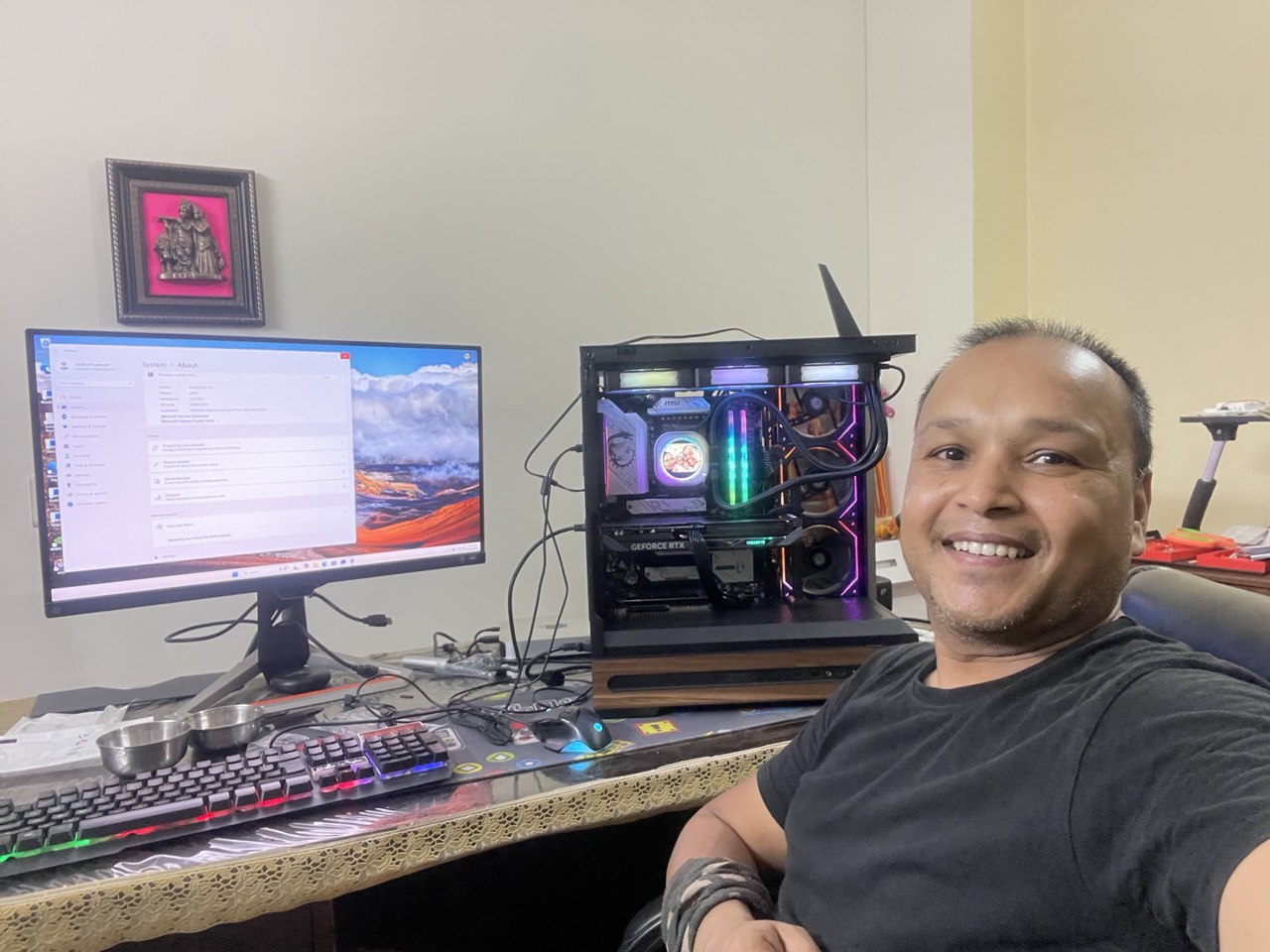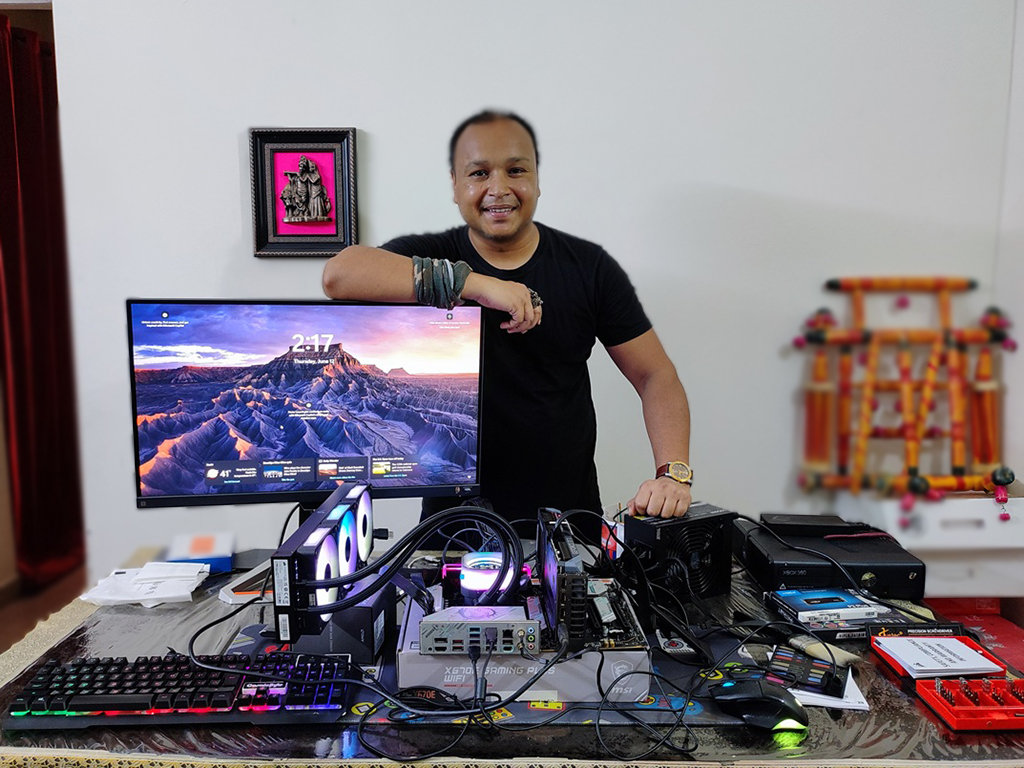Home » #Memoir

Personal Supercomputer Dreams: Creating My AI-Powered Beast Machine
AI, AR, Artificial Intelligence, Creative AI, Gaming, GoldMan Sach, NITRourkela, PC Build, PeopleStrong, PeopleStrong HR Tech, RetiredAt40, SuperComputer, Year2025Every tech enthusiast dreams of building a powerful machine, and for me, that dream turned into reality. As a CSE graduate from NIT Rourkela with 20+ years in the tech industry, I always wanted a system that could handle high-performance computing and AI workloads. Building my SuperComputing AI cum Gaming Rig became more than just…
Artificial Intelligence can write essays, paint pictures, and generate realistic videos. Yet, under the hood, text-based models and image-based models process information in very different ways. In this tech concept, we break down tokens in transformers and noise in diffusion models so that anyone, even without a technical background, can understand how these systems work.…
The diffusion model ecosystem has evolved rapidly in the last few years, offering cutting-edge solutions for photorealistic rendering, anime-style art, logo generation, pixel design, and more. Now these models power my creative AI vision, driving innovation for my BlackDemon India brand. In this tech concept, you’ll discover the most powerful diffusion models available today—categorised by…
AI image generation has opened up new frontiers in digital creativity. Tools like Stable Diffusion, MidJourney, and DALL·E can create vivid, high-resolution visuals with just a few lines of text. However, generating consistently high-quality images depends on how effectively you craft your prompt. This tech concept offers a detailed, practical approach to AI prompt engineering for better understanding core principles…
Artificial Intelligence is evolving rapidly, and the next wave is already here: AI agents. While the public is still adapting to large language models (LLMs) like ChatGPT and Gemini, the tech ecosystem has moved a step ahead—toward autonomous agents that can think, plan, and act. This isn’t simply automation. AI agents represent a fundamental shift in how…
If you’re using Windows 10 or 11, you can install Linux inside your system using WSL (Windows Subsystem for Linux) — no need for dual boot or virtual machines. And with it, you can run tools like Jupyter Notebook — perfect for data science, machine learning, or Python-based development. In this tech concept, we’ll walk…
Are you a Windows user looking to harness your NVIDIA GPU for AI development using PyTorch, TensorFlow, or Hugging Face? You no longer need to dual-boot or switch to Linux to run high-performance AI workloads. With the right setup, Windows can be your ultimate AI development powerhouse.This tech concept, walks you through a bulletproof WSL…
The rise of artificial intelligence has sparked debate across the tech world: is traditional coding becoming obsolete? With tools like ChatGPT, GitHub Copilot, and Replit Ghostwriter writing code at lightning speed, some believe that AI will soon replace human developers. With over 20 years of tech industry experience and a Computer Science graduate who has…

My Journey of Building a Custom AI and Gaming Supercomputing Rig Year 2025
Every tech enthusiast dreams of owning a high-performance machine that can handle the most demanding workloads. For me, as a CSE graduate from NIT Rourkela and 20+ year in tech industry, this dream became a passion project—one that would test my technical skills, patience, and love for hardware. I had multiple options to buy a…
If you’re working with Hugging Face’s transformers and peft libraries on Windows, you’ve likely seen messages or warnings related to model caching, symlinks, and environment variables. This guide demystifies how Hugging Face handles model storage, how to change the cache locations, and how to resolve common issues — especially on Windows. What Is Model Caching…

Crafting My Dream Supercomputer: A Personal Lab Fueled by Passion, Purpose, and Future-Readiness
AI, AR, Artificial Intelligence, Gaming, GoldMan Sach, NITRourkela, PeopleStrong, PeopleStrong HR Tech, RetiredAt40, SuperComputer, Year2025For more than 20 years, I’ve been immersed in the ever-evolving world of technology—writing millions of lines of code, scaling products, and leading digital transformation initiatives that fueled tremendous business growth. My journey has taken me through some of the finest tech ecosystems, including Erevmax, TravelGuru, Nagarro, and PeopleStrong HR Technologies. After stepping back from…
Companies today are drowning in policy documents, employee handbooks, and compliance guidelines—but finding specific answers quickly remains a challenge. What if employees could simply ask questions in natural language and get accurate, instant responses from an AI trained on your exact documents? In my 20-year tech career, I’ve been a catalyst for innovation, architecting scalable…
In today’s fast-paced corporate environment, employees often have questions about company policies—from attendance rules to leave entitlements and codes of conduct. While traditional intranets and HR portals provide static information, generative AI offers a more interactive way to access policy information. For over 20 years, I’ve been building the future of tech, from writing millions…
AI continues to revolutionize how we solve complex problems, and model fine-tuning plays a key role in this transformation. Whether you’re building smarter chatbots, domain-specific vision models, or personalized LLMs, fine-tuning lets you customize powerful pretrained models with significantly fewer resources. Over the last 20 years, I’ve gone beyond coding mastery—championing strategic leadership that propels…
Fine-tuning large language models has revolutionized natural language processing (NLP) by allowing us to adapt powerful pretrained models to specific use cases. Whether you’re building a domain-specific chatbot, sentiment classifier, or text summarizer, fine-tuning helps bridge the gap between generic language understanding and task-specific performance. For over two decades, I’ve gone from crafting millions of…
As AI continues its rapid evolution, the demand for faster, lighter, and smarter model customization is at an all-time high. Fine-tuning has emerged as a go-to strategy to adapt pretrained models to specific domains or tasks without starting from scratch. For over 20 years, I have led transformative initiatives that ignite innovation, build scalable solutions.…
As AI adoption skyrockets across industries, selecting the right GPU becomes a critical success factor. NVIDIA’s RTX 50 Series, powered by the groundbreaking Blackwell architecture, delivers versatile and powerful GPUs optimised for a wide range of AI workloads — from fast inference to efficient fine-tuning and limited full model training. For over 20 years, I’ve…
As AI continues to reshape industries, choosing the right GPU is no longer a luxury—it’s a strategic necessity. NVIDIA’s RTX 40 Series, built on the Ada Lovelace architecture, delivers next-generation power for developers, startups, and AI enthusiasts looking to scale inference, fine-tune large models, and even train them from scratch. With over 20 years in…
If you’re building a machine for AI model fine-tuning with PyTorch, TensorFlow, or HuggingFace, choosing the right CPU can feel overwhelming. While the GPU does most of the heavy lifting, your CPU still plays a crucial supporting role—especially in data loading, model orchestration, and multitasking during long training loops. For over 20 years, I’ve been a catalyst of…
Like me, if you’re building a high-end desktop rig in 2025, your top contenders are undoubtedly the AMD Ryzen 9 and Intel Core i9 processors. Both deliver elite-level performance—but the best choice depends entirely on your use case and the CPU generation you’re targeting. For over two decades, I’ve been driving innovation at the cutting edge of the tech industry—engineering scalable solutions, leading…



